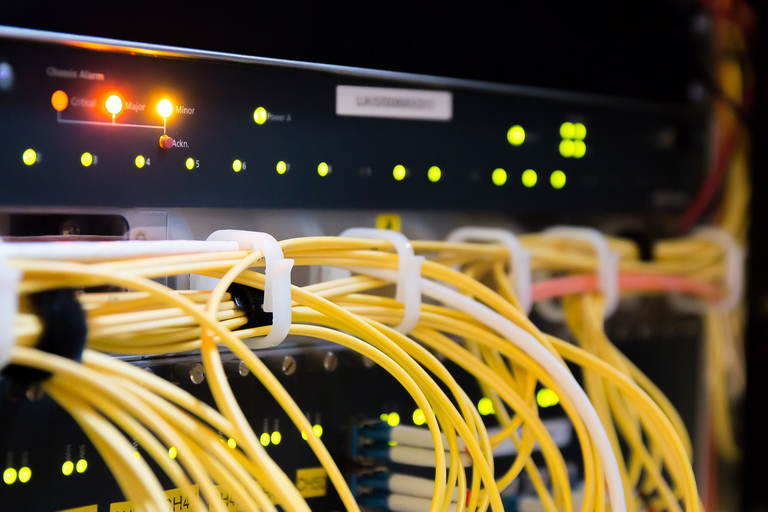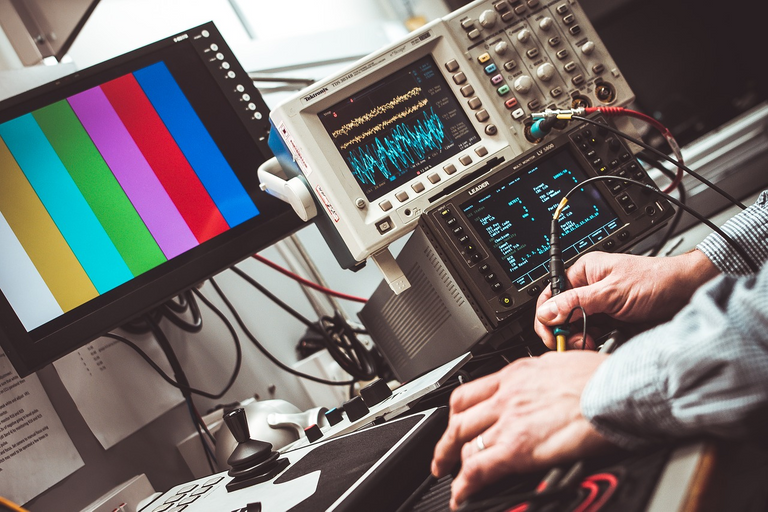How fast electron flow in a wire?

We can determine the speed of electricity by understanding the different velocities associated with and the process of moving an electron. To understand it, we must go through the fundamentals of electric flows. We often refer to electrical charges that flow through a metal wire. On account of electricity going through metal wires, we have three unique speeds to understand that present genuine significance: the individual electron speed, the electron drift, and signal speed. We framed electric flows in metal wires as the flowing of free electrons. When it comes to everyday electric flows in metal wires, free electrons can be thought of as small balls jumping around in a fixed network of atoms that comprise the metal wire.
We know that valence electrons are likewise loosely attached to the atom move it when we apply external energy. The motion of each free electron is in an organized fashion. It changes course as a result of the collision and repeats as it moves. The free electrons inside constantly float around and crash into each other in an unpredictable pattern when a metal wire lift alone. When we left a metal wire with an uncontrolled motion of electrons, it will generate heat in return.
The average speed of an individual electron is about nanometers per second. Perceptibly, we call the arbitrary movement of little particles heat. The electron speed measures around nanometers each second that an electron voyage while going in an orderly fashion between crashes. A wire left to itself conveys no electric sign, so the individual electron speed of the haphazardly moving electrons is only caused by heat in the wire and not the electric flow. When we connect the wire to a battery, the wire experienced a revolving electric field around it. The electric field focuses one way down the wire's length. The free electrons in the wire since the electric field's power and accelerate toward it. The electrons continue to collide with molecules, causing them to bob around in various directions.
However, they now have an organized movement toward the path, which is inverse to the electric field. The electrons' motion constitutes the electric flow in the wire, while the irregular motion generates heat in the wire. When we have an applied electric field, it causes electrons to flow down the wire. The drift velocity is a term that defines the usual pace at which electrons flow across a wire.

(source)
Generally, the drift velocity does not imply that it influenced the motion of the drift velocity does not imply that influenced how the electron moves and travel in the wire. Electrons are not particularly powerful particles that will knock down other electrons at their flows. That will knock down other electrons through one another. Electrons can communicate through the electromagnetic field. Two electrons approach each other can cause an electromagnetic interaction between each other, either repel or attract each other.
Interestingly, when an electron moves, its field goes with it. As a result, electrons can push another as it moves across the medium. Besides, the electrons move across the medium slower than the electromagnetic field. The electromagnetic field fluctuates as it propagates along the wire. We examined the signal speed of electromagnetic impacts going down a wire. We define signal speed as the speed at which the rate electromagnetic travels or propagates across a cable. When the signal traveling across an electric connection was with a separate electromagnetic wave, we can expect the signal to travel at the speed of light in a vacuum. Perhaps the signal traveling along an electric connection contains a connection of both electromagnetic field and electrons.
Thus, the signal speed is quicker than the electron drift velocity yet is slower than the speed of light in a vacuum. For the most part, the signal speed is near the speed of light in a vacuum. We can relate the signal speed to the bit rate in our PCs. While we can determine the bit rate of an advanced signal passing through systems by the actual signal speed in the wires, it is also determined by how successfully the organization's PCs can route the signs through the organization. Hence we communicated with energy and data by changes in the electromagnetic field; it travels faster across an electrical wire than any single particle.

(source)
We can visualize the relationship as a long queue of individuals is holding their back as they moved along. We see that everyone tries to squirms anxiously to take their spot in line. The person approaching the stopping point becomes impatient and pushes the person in front of him. When every person shoves the person in front of them, the individual shoves the individual in front. As a result, it continues to happen from one person to the next as they progress through the line. The push will arrive at the restaurant's entrances sometime before the final person in line. The individuals reflect the electrons, their arms mirror the electromagnetic field that links between the electrons, and the push adds to the resemblance of interactions of electrons as it moves.
The speed at which every individual moves reflects the electron speed, while we can relate the drift velocity to every individual exclusively squeezing in the line to advance. Similarly, we would anticipate that the signal velocity should be quick, the individual speed to be to some degree quick, and the float speed to be moderate. Then, how fast is the electron moving? Researchers have timed how long it takes for an electron to move from an atom, which they used a stopwatch made up of incredibly brief laser pulses. They found out it is 0.00000000000000002 seconds or 20 billionths of a billionth of a second. Hopefully, the findings will lead to new insights into some of nature's most fundamental processes.
Individual electron speeds in a metal wire are typically thousands of kilometers per hour. Surprisingly, the float speed is around a couple of meters per hour, whereas the signal speed ranges between a hundred million and a trillion kilometers per hour. We can expect that the signal speed approaches the speed of light in a vacuum. The individual electron speed is several orders of magnitude slower than the signal speed. The electron drift is approximately slower speed than the other.
References
- The unbelievable speed of electron emission from an atom
- The lights turn on very quickly when I flip the switch. Just how fast does electricity flow in a wire?
- How fast does electricity travel?
- How fast does electricity flow?
- Computers are becoming faster and faster, but their speed is still limited by the physical restrictions of an electron moving through matter. What technologies are emerging to break through this speed barrier?
- New experiment hints that a particle breaks the known laws of physics
- Particles Moved Faster Than Speed of Light?
Well researched and interesting read, @juecoree. I !LUV these technical articles, but I have to bookmark and read it again. Kudos for the effort and a slice of !PIZZA for you. :)
@juecoree! I sent you a slice of $PIZZA on behalf of @juanvegetarian.
Learn more about $PIZZA Token at hive.pizza
@juecoree! I sent you a slice of $PIZZA on behalf of @juanvegetarian.
Learn more about $PIZZA Token at hive.pizza
Appreciate the kind words, @juanvegetarian!
Hi @juecoree, you were just shared some LUV thanks to @juanvegetarian. Holding 10 LUV in your wallet enables you to give up to 3 LUV per day, for free. See the LUV in your wallet at https://hive-engine.com or learn about LUV at https://peakd.com/@luvshares
I think how fast electrons will flow will also depend on the resistance of the wire. I don't know, my physics might be a bit rusty.
I agree that resistance may affect how fast the electrons flow in a wire.
Well informative post..
Awesome work...
some !LUV token....
Sorry, you're out of LUV tokens to be sent today. Try tomorrow. (Having at least 10 LUV in your wallet allows you to freely give 3 per day.)
Thanks for your contribution to the STEMsocial community. Feel free to join us on discord to get to know the rest of us!
Please consider supporting our funding proposal, approving our witness (@stem.witness) or delegating to the @stemsocial account (for some ROI).
Please consider using the STEMsocial app app and including @stemsocial as a beneficiary to get a stronger support.
Hi, @juecoree your post exercises the mind with formal content in electronics. It then gives a comparative example that is quite clear and fully understood. Thanks for sharing these lines.